The year 2022 was full of groundbreaking solar policy news, with Solar Power World readers visiting the site for the latest updates on federal legislation as well as state rulings. Domestic manufacturing was another hot topic, thanks to new tax incentives announced for developers using U.S. materials.
Some less positive news made the most-read stories list too, with a national installer changing its name and then closing its doors, and the continued anti-dumping investigation by the Dept. of Commerce leading to module delivery delays. But despite the hurdles, the policy progress of the year has brought long-term certainty to all levels of the U.S. solar market.
Below are the Top 10 most-read stories on SPW from the past year. Stay on top of U.S. solar industry happenings in 2023 and beyond by following SPW on Twitter and subscribing to our weekly enewsletter.
10. It took less than one week for solar panel deliveries to the United States to be canceled or delayed
SEIA surveyed solar companies after the Commerce Dept. decided to investigate allegations of tariff circumvention by solar panel manufacturers. A week after the investigation decision was released, 75% of survey respondents (200 companies) said solar panel deliveries had been canceled or delayed.
 9. Should you install bifacial solar panels on tracking systems?
9. Should you install bifacial solar panels on tracking systems?
Is there a benefit to pairing two technologies that each ensure greater solar yield? Some tracker manufacturers believe there is.
 8. LG’s advice to U.S. installers as it exits solar panel manufacturing
8. LG’s advice to U.S. installers as it exits solar panel manufacturing
LG announced in March that it would stop manufacturing solar panels by the end of Q2 and shift its company focus to energy products like its popular LG RESU energy storage system. SPW spoke with LG’s head of solar panel sales to find out what would happen with completed and contracted projects using LG panels.
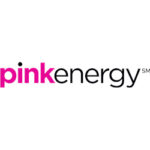 7. Powerhome Solar changes name to Pink Energy
7. Powerhome Solar changes name to Pink Energy
North Carolina-based Powerhome Solar changed its name to Pink Energy in April, but then shut its doors altogether in September. The residential solar provider was working in 15 states.
 6. CPUC releases new NEM 3.0 proposal almost one year after the first
6. CPUC releases new NEM 3.0 proposal almost one year after the first
Almost a year after its first proposed NEM 3.0 decision that sent the state’s solar industry into a frenzy, the California Public Utilities Commission (CPUC) released a new version. The new proposed decision did away with the original “solar tax,” but still included a shift to net billing and a glide path to transition to the new plan.
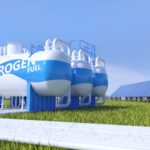 5. DOE close to loaning $500 million for world’s largest green hydrogen plant
5. DOE close to loaning $500 million for world’s largest green hydrogen plant
The Dept. of Energy’s Loan Programs Office issued a conditional commitment to provide $504.4 million in debt financing on what could be the world’s largest industrial green hydrogen production and storage facility. The Advanced Clean Energy Storage hydrogen hub will be located in Delta, Utah.
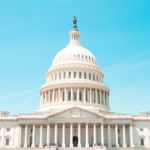 4. Long-term ITC extension, standalone storage and direct pay: What’s in the IRA
4. Long-term ITC extension, standalone storage and direct pay: What’s in the IRA
The Inflation Reduction Act, packed with incentives for the solar + storage industry, was passed by the House of Representatives on August 12 and signed by President Biden on August 16. Solar advocates say the sector will boom thanks to the long-term certainty provided by this law.
3. Which companies are making solar panels in the United States?
The United States is hopefully, fingers crossed, entering a solar module manufacturing renaissance. Solar Power World has gathered information on the companies already making modules in the United States and provides a summary of their expansion plans related to the new IRA credits.
2. California grid set record of 97% renewable power on April 3
In another sign of progress toward a carbon-free power grid, the California Independent System Operator set a new record on April 3, when 97.6% of electricity on the grid came from renewable energy. The peak, which occurred briefly at 3:39 p.m., broke the previous record of 96.4% set on March 27, 2022.
 1. An energy storage boom is coming thanks to the new storage ITC
1. An energy storage boom is coming thanks to the new storage ITC
A 21st century gold rush is upon us, as individuals, businesses and utilities sprint to install energy storage systems using the new storage investment tax credit (ITC) included in the IRA. For the first time, batteries don’t have to be installed with or charged by solar panels to receive a tax credit.



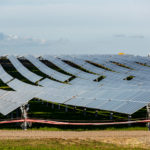



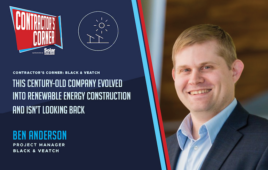
Some of these stories are ‘conditional’ under the IRA for ITC qualification of an installed system. Like expansion of residential ESS. The IRA has conditionals of “how much material” is sourced in the U.S.. So, recent announcements of company ABF being constructed in Arizona needs to be online to serve the ESS industry in the U.S.. Some of this stuff will not be ready until around 2024. By 2024 Bidens moritorium on the commerce department’s investigation into Malayasian solar PV cells may be determined to be of Chinese origin and under the 201 Tariffs, taking away from solar PV panels assembled in the U.S., using Chinese supply chain solar PV cells. This is more of a game of International, geopolitics and political regulatory “twister”, that abrogates the “intent” of each mandate from each entity.